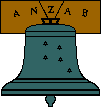
Foster Fyans was an Irish military officer, penal colony administrator and public servant. He was acting commandant of the second convict settlement at Norfolk Island, the commandant of the Moreton Bay penal settlement at Brisbane, the first police magistrate at Geelong, and commissioner of crown lands for the Portland Bay pastoral district in the Port Phillip District of New South Wales. He is the great-great-grandfather of actor Sam Neill.
Charles J. Dillon was an English actor-manager and tragedian.
The following lists events that happened during 1868 in Australia.

Alfred Thomas Montgomery Madden Ozanne was an Australian politician. He was an Australian Labor Party member of the Australian House of Representatives from 1910 to 1913 and 1914 to 1917, both times for the seat of Corio.
The MacMahon brothers were entrepreneurs in Australian show business. Chief among them were James MacMahon and Charles MacMahon, who together and separately toured a large number of stage shows. Their younger brothers, Joseph and William, were involved in many of those activities.

The Australian and New Zealand Association of Bellringers, known as ANZAB, is the organisation responsible for the promotion of English-style "full circle ringing" – namely change ringing and method ringing in bell towers with a peal of bells – across Australia and New Zealand.

Wallace Sutherland Sharland was an Australian rules football player, journalist and commentator. He played with Geelong in the Victorian Football League (VFL).
The Yorick Club was a gentlemen's club in Melbourne, Australia, whose membership consisted originally of men involved in the arts and sciences. It was founded in 1868 and continued in some form into the 1950s and perhaps beyond.
Samuel Fiddian M.A. was a schoolteacher, remembered as the first principal of Prince Alfred College in Adelaide, South Australia. He then founded a Grammar School in Creswick, Victoria, of which he was principal and proprietor from 1872 to 1903.

Rabbit plagues in Australia have occurred several times throughout parts of Australia since wild European rabbits were introduced by European colonists.
Henry Lewis Conran, generally known as H. L. Conran but Harry to his friends, was an Australian pastoralist and stockbroker.

Louis Australia Whyte was an Australian amateur tennis player and golfer. He won the Intercolonial Lawn Tennis Championships twice, in 1881 and 1883. In golf he won the Victorian Golf Cup in 1894 and the Australian Amateur in 1900.

George Harry "Snazzy" Snazelle was an English singer and raconteur who enjoyed a great popularity in Australia.
William Charles Baxter was a carnival rides operator who ran a celebrated merry-go-round at St Kilda, Victoria, Australia. He has also been credited as the first to screen a moving picture film in Australia, and was the first to screen a film of the Melbourne Cup on the evening of the event. He was closely associated with his cousin, Frederick William Baxter who later operated a merry-go-round in Glenelg, South Australia.
Frederick George Younge was an English comic actor, in Australia for six years.
Gladstone Eyre was an Australian portrait artist and landscape painter around Sydney, New South Wales and Launceston, Tasmania in the late 19th and early 20th centuries.

Henry John King (1855–1934) was an Australian composer.
I'm going back to Yarrawonga originally titled Yarrawonga is a jaunty topical song that describes an Australians elation at returning home, written by Corporal Neil MacBeath AIF during a tour of France in World War One. The song was recorded by several artists including Leonard Hubbard, George Trevare Dance Orchestra and Slim Dusty more recently in 2006.
The Howson family was a show-business dynasty founded in Australia, several of whose members went on to further success in America, London and Europe.









